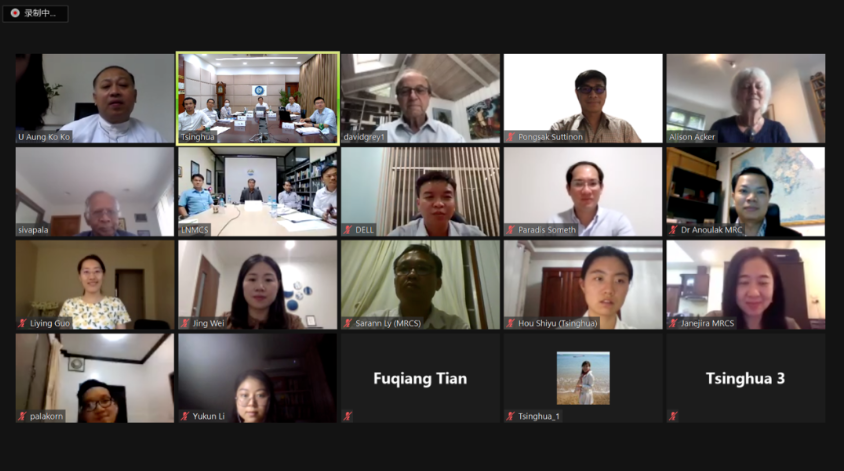The report titled "Drought Characteristics of Lancang-Mekong River Basin and the Impact of Reservoir Regulation on Streamflow" jointly implemented by the experts at Tsinghua University and China Institute of Water Resources and Hydropower Research will help enhance mutual trust between various stakeholders in the river basin, further promote water resources cooperation and facilitate concerted efforts to address droughts in the Lancang-Mekong River Basin, international experts said in an webinar on July 14.
The webinar drew 15 international experts, including Professor David Grey from Oxford University, Professor Murugesu Sivapalan from the University of Illinois at Urbana-Champaign, Dr. Anoulak Kittikhoun from Mekong River Commission Secretariat, Dr. Pongsak Suttinon from Chulalongkorn University and other experts and representatives from the six Lancang-Mekong countries.
Dr. Fuqiang Tian, Professor from Tsinghua University and leading author of this report made a presentation briefing the research methods, datasets and conclusions to the experts.
Experts commended the report during the discussion, adding that it accurately revealed drought characteristics of the Lancang-Mekong River Basin, causes of the droughts in 2019 and runoff composition of the Mekong River by using state-of-the-art models, methods and comprehensive datasets in the research. They also highlighted that this report illustrated the mitigation effect of upstream reservoirs on the drought as a whole. These scientific facts provided by the report will help enhance mutual trust, promote water resources cooperation between different stakeholders and find a solution to droughts in the whole river basin.
“To clarify the causes of droughts in the Lancang-Mekong River Basin and the role of reservoir operation, and promote the cooperation of water resources in the Lancang-Mekong River Basin, we conducted a research and completed the report”, said Dr. Liu Hui, co-author of this report, adding our research shows that the frequency of severe and exceptional drought in the Lancang-Mekong River Basin has increased over the past 120 years, and all countries in the upstream and downstream of the basin have been severely affected. ”
According to the findings of the research, the middle and upper reaches of the Lancang River in China see the highest frequency of drought occurrence. Droughts happen mostly in the dry season when water for irrigation is mostly needed.
The study also found that the 2019 drought was among the most severe droughts in the last 120 years. The most affected area was located in the region from lower Lancang to the upper Mekong due to insufficient rainfall caused by abnormal monsoon and higher temperature, and evaporation caused by El Nino phenomenon.
“We also found that Cascade reservoirs on the Lancang River can effectively supply water during the dry season by storing water during the flood season and releasing more water in the dry season. This pattern can generally alleviate droughts of the Mekong River. We suggest the riparian countries should adopt diverse measures to alleviate droughts in the Lancang-Mekong River Basin. For example, they could reinforce the cooperation in regulating reservoirs in the whole river basin including those on the tributaries. There is a real need to foster information sharing and joint research, enhance mutual trust and promote cooperation.” said Dr. Tian.

Attached: Report “Drought Characteristics of Lancang- Mekong River Basin and the Impacts of Reservoir Regulation on Streamflow”
 Report on LM Drought and Reservoir Regulation - THU&IWHR - 200715.pdf
Report on LM Drought and Reservoir Regulation - THU&IWHR - 200715.pdf